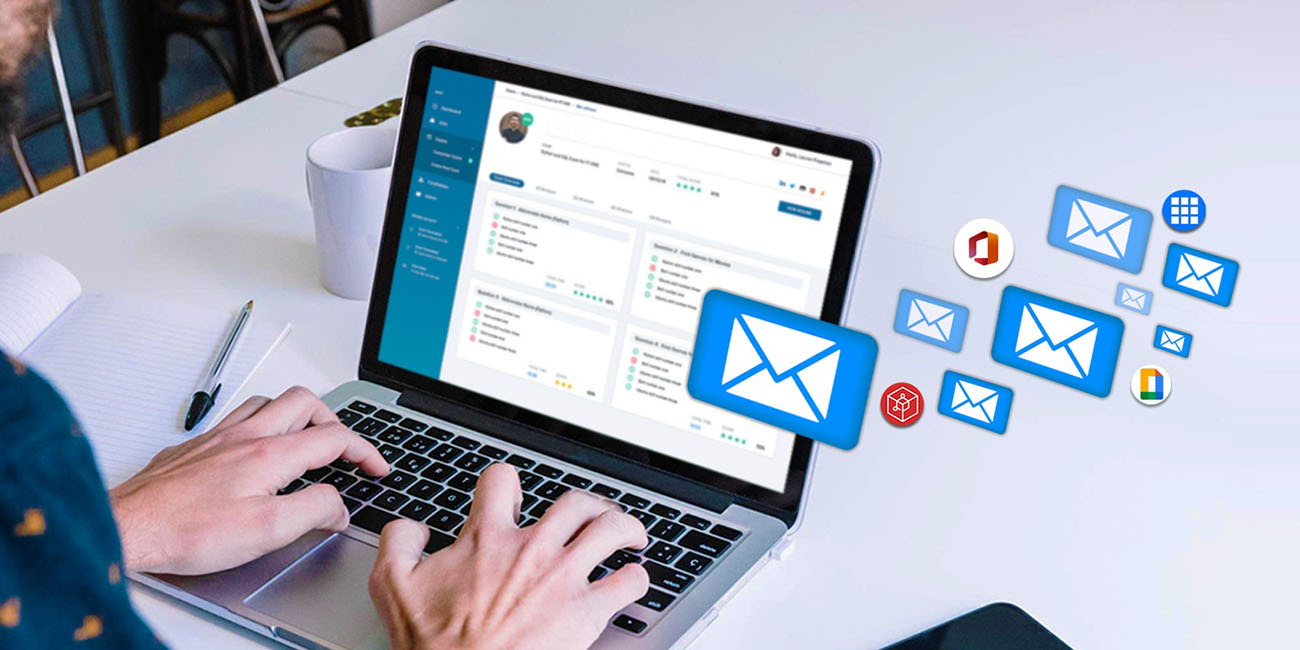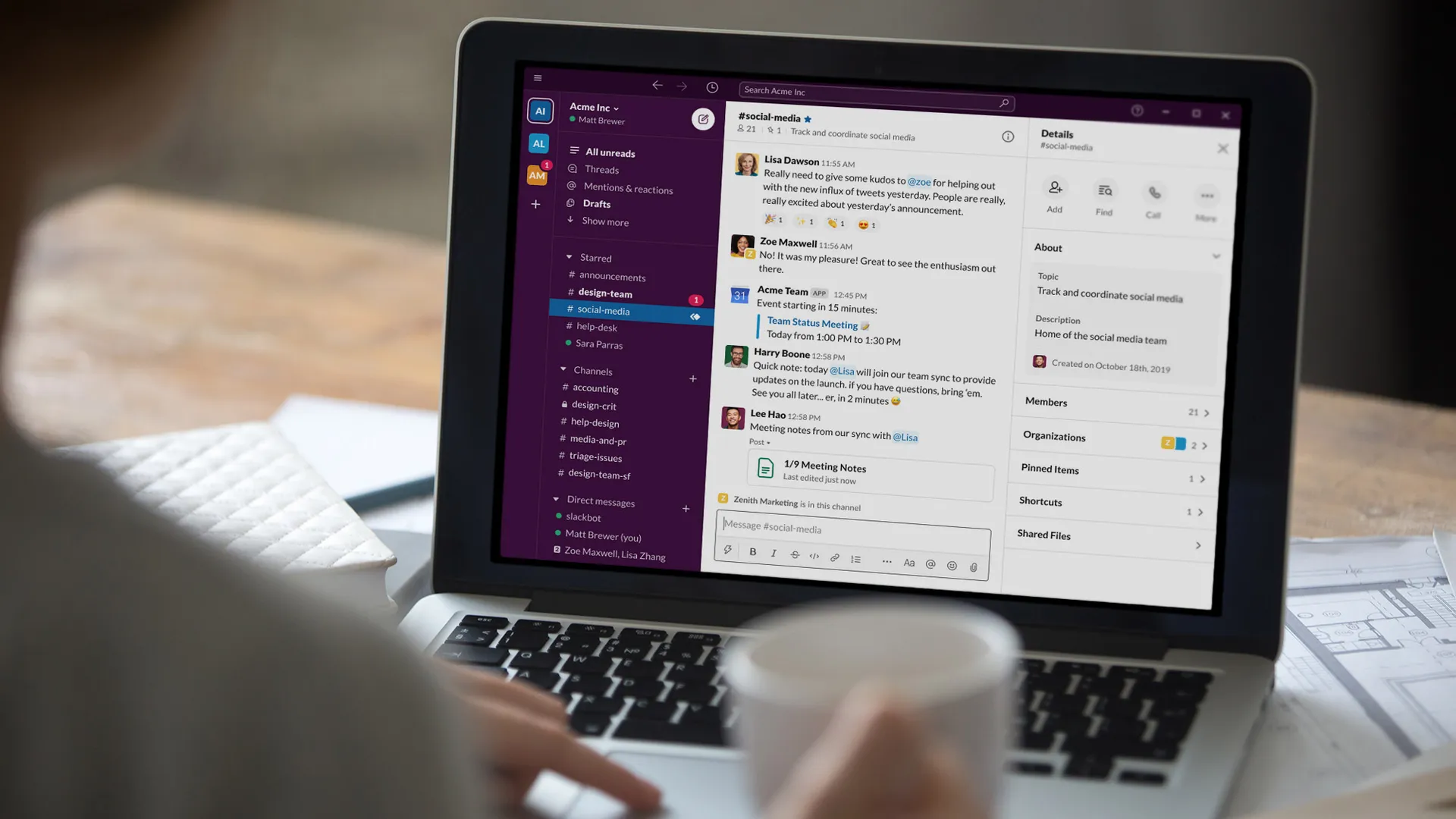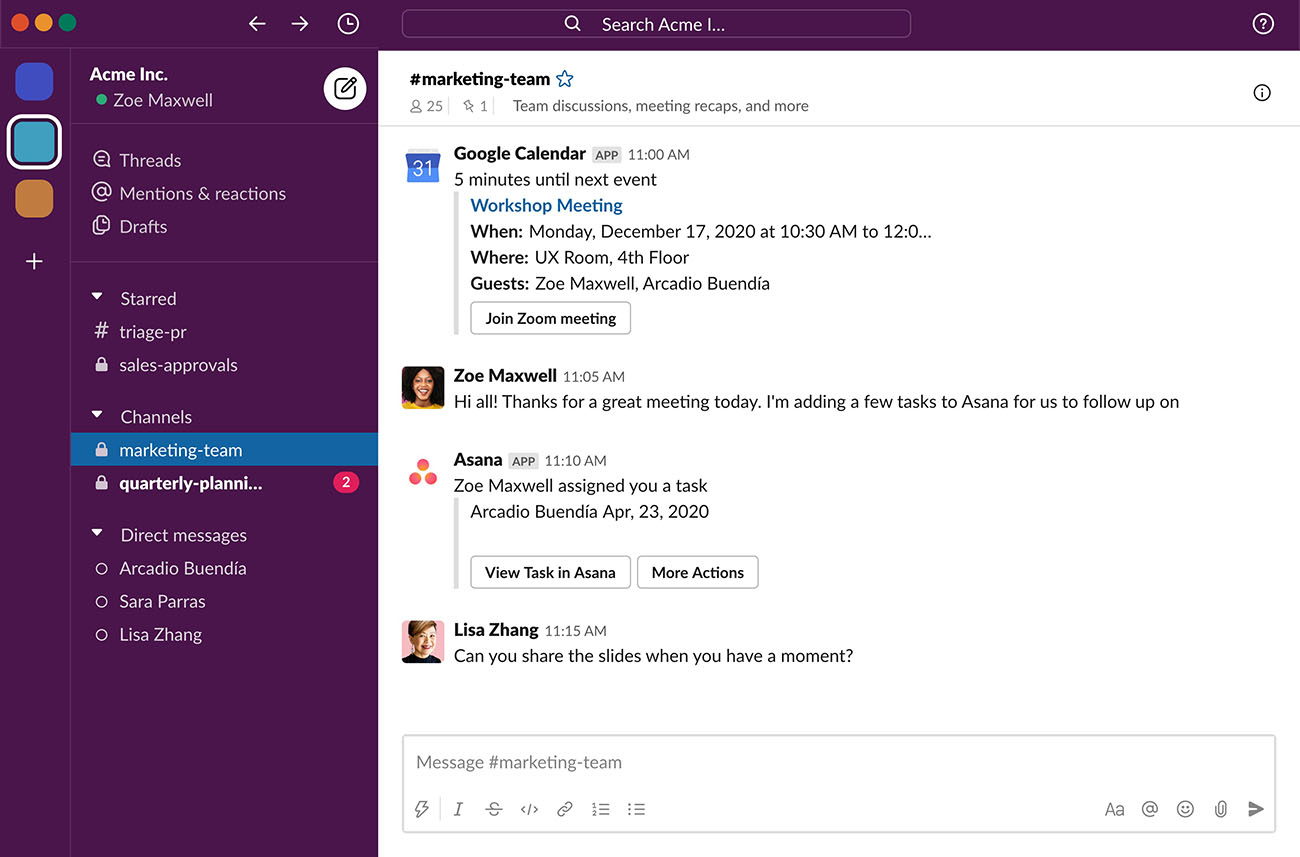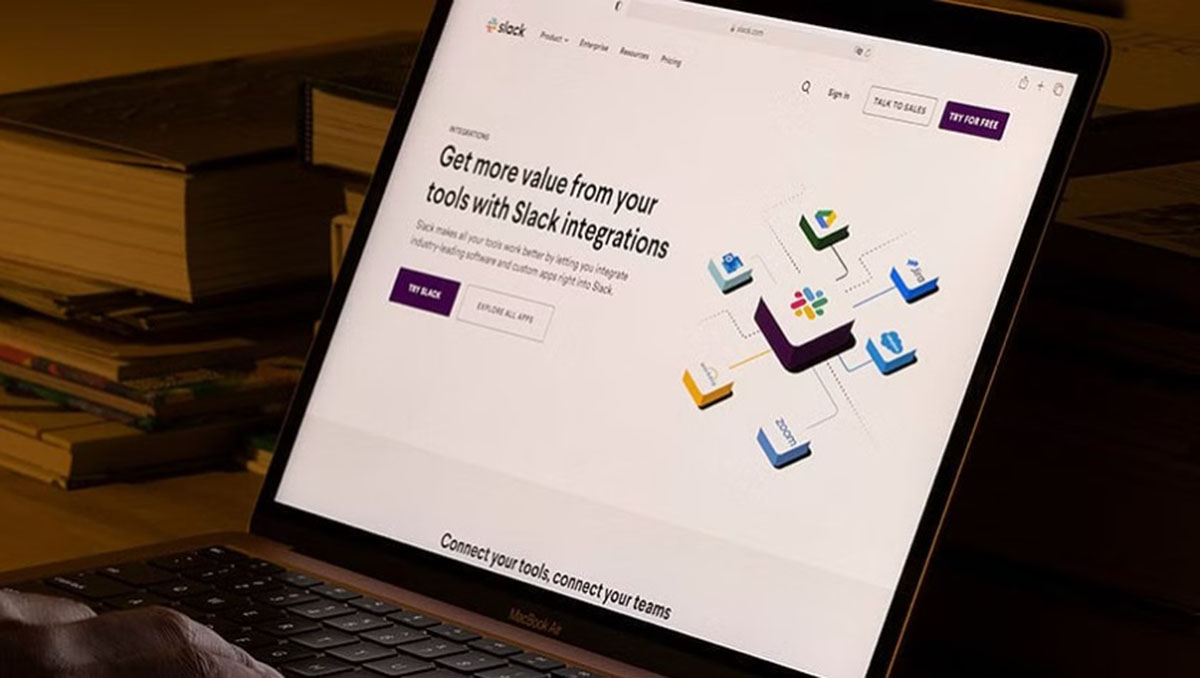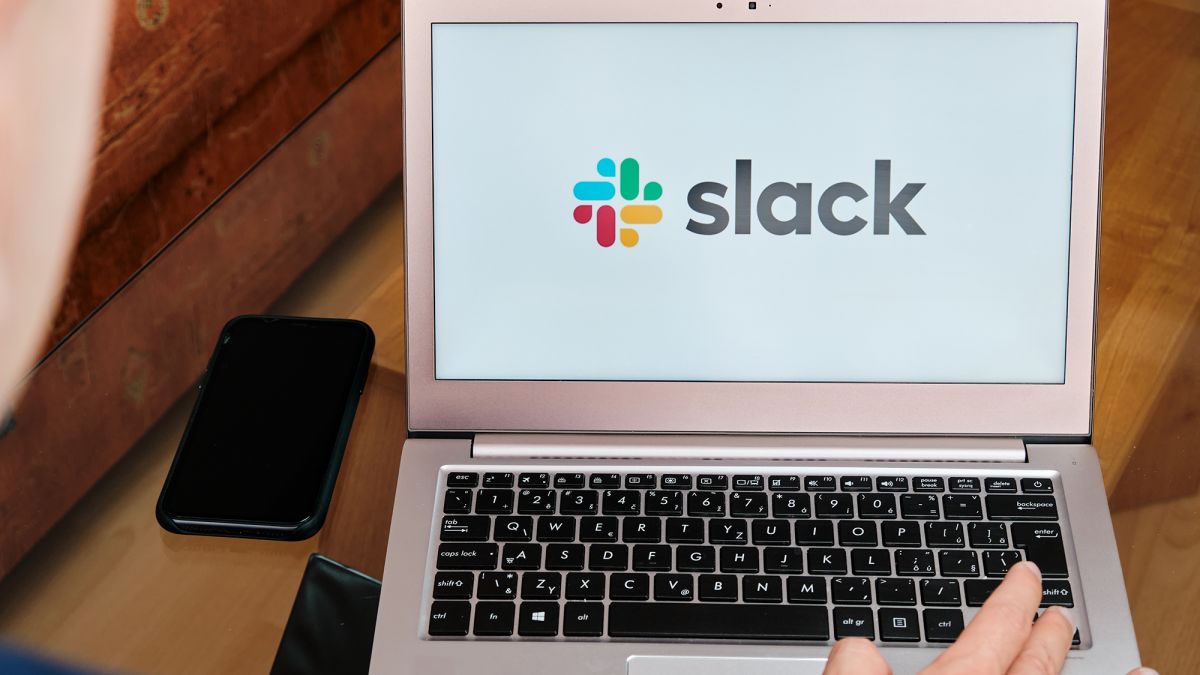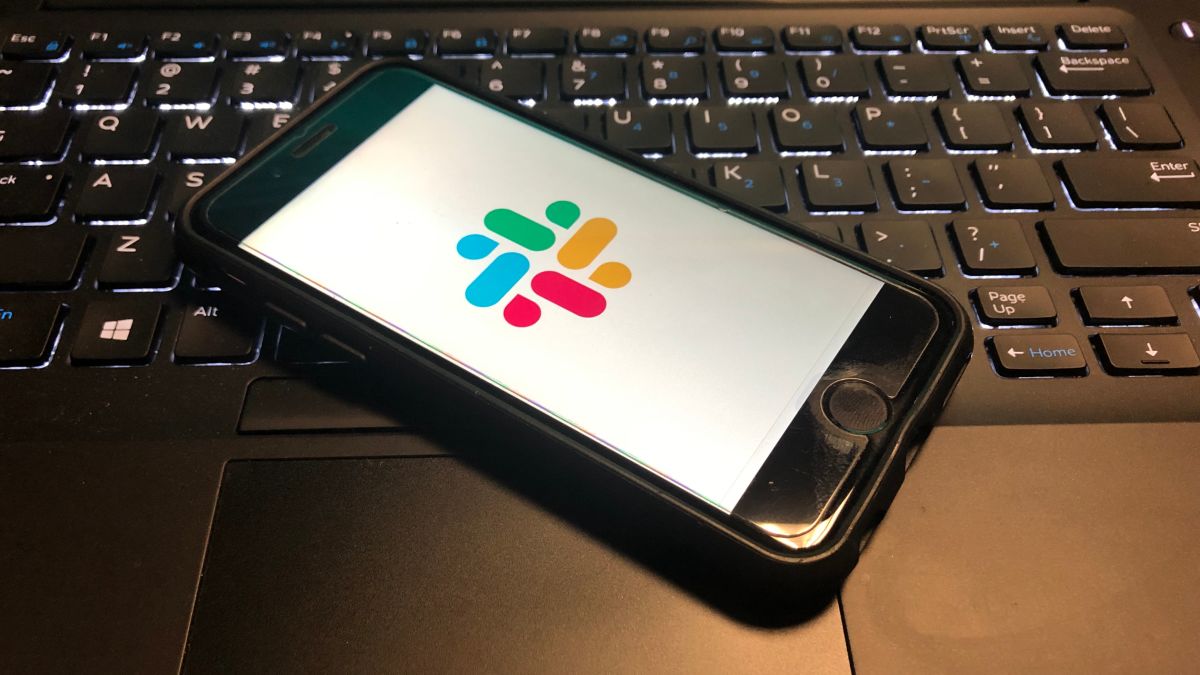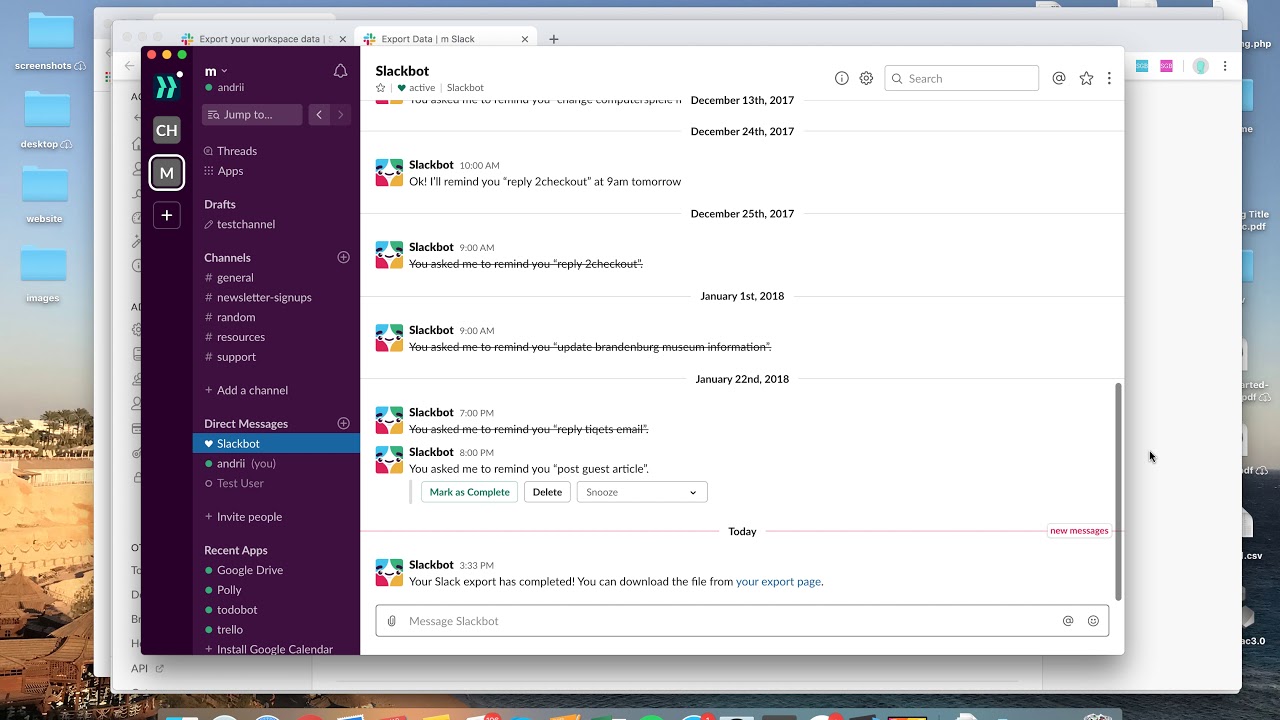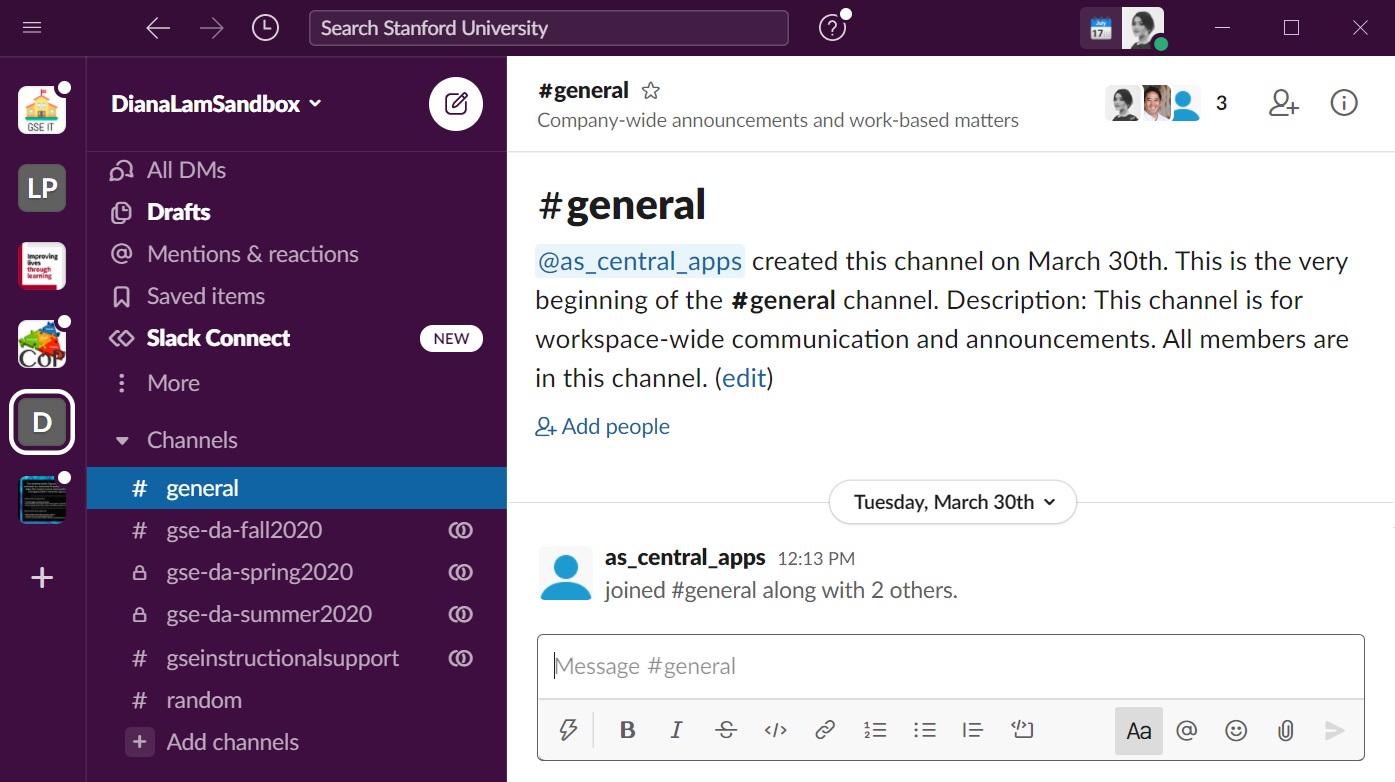Introduction
In today’s fast-paced digital world, effective communication is crucial for successful collaboration and productivity. While email has long been the go-to method of communication in the workplace, its limitations are becoming increasingly apparent. Enter Slack – a powerful team communication platform that offers a myriad of advantages over traditional email.
Slack is designed to streamline and enhance communication within teams, providing a real-time, organized, and efficient way to collaborate. It offers a plethora of features that facilitate seamless information sharing, reduce email clutter, and keep everyone on the same page. In this article, we will explore why Slack is a superior choice compared to email for modern businesses.
Gone are the days of waiting for an email response, as Slack provides real-time communication capabilities. With its instant messaging functionality, team members can engage in dynamic conversations, enabling quicker decision-making and problem-solving. Ideas can flow freely, and discussions can happen in real-time, fostering a sense of immediacy and collaboration.
Moreover, Slack’s organization of conversations is far superior to the traditional email inbox. Instead of cluttered threads and long email chains, Slack offers channels to categorize discussions based on topics or projects. With customizable channels, team members can easily navigate and participate in relevant conversations, ensuring that everyone stays on track and no important information gets lost amidst the clutter.
One of the most powerful features of Slack is its search and archiving functionality. Looking for a specific conversation or piece of information in email threads can be like searching for a needle in a haystack. Slack, on the other hand, makes it a breeze to locate past conversations, files, and attachments. Its robust search engine allows users to quickly find what they need, saving valuable time and eliminating frustration.
In addition to its communication capabilities, Slack integrates seamlessly with other tools and platforms used by businesses. This integration enables users to centralize their workflow and access various apps and services within the Slack interface. From project management tools to customer support software, integrating these tools with Slack enhances efficiency and eliminates the hassle of switching between different applications.
Collaboration is taken to a whole new level in Slack. Multiple team members can collaborate on a document simultaneously, add comments, make edits, and track changes in real-time. This eliminates the need for back-and-forth email exchanges and ensures that everyone is working on the most up-to-date version of a file. The ability to collaborate seamlessly within Slack streamlines the workflow and promotes better teamwork.
Another significant advantage of Slack is its extensive notification and alert system. With email, important messages can get lost in a plethora of other emails, leading to missed deadlines or overlooked information. Slack offers customizable notifications, so team members can receive alerts specific to their needs. Be it mentions, direct messages, or updates in specific channels, Slack ensures that everyone stays informed and engaged without being overwhelmed by a flood of emails.
Perhaps one of the most appealing aspects of Slack is its ability to reduce email clutter. With Slack, non-essential or informal communication can be moved away from an overflowing inbox. Team members can have quick discussions in Slack channels, sharing memes, exchanging updates, or simply engaging in water cooler conversations, leaving email for more official and important matters. This separation results in a cleaner and more efficient email inbox, allowing individuals to focus on critical messages without distractions.
Lastly, Slack’s mobile accessibility empowers teams to communicate and collaborate on the go. With mobile apps available for both iOS and Android devices, team members are no longer tied to their desks. They can participate in conversations, access files, and stay updated wherever they are. This flexibility further enhances productivity and ensures that important communication is not missed, even when team members are not in the office.
In summary, Slack provides numerous benefits over email for effective team communication. Its real-time nature, organized conversations, searchability, integration with other tools, enhanced collaboration, notifications and alerts, reduction in email clutter, and mobile accessibility make it a superior choice for modern businesses. By utilizing Slack, teams can communicate more efficiently, streamline workflows, and ultimately achieve better results.
Real-time communication
One of the primary advantages of using Slack over email is its real-time communication capabilities. Traditional email communication often involves delays, with messages sitting in inboxes until the recipient checks their email. In contrast, Slack facilitates instant messaging, enabling team members to engage in dynamic conversations and receive immediate responses.
Real-time communication in Slack enhances collaboration and enables quicker decision-making. When team members can interact in real-time, ideas can flow freely, leading to more innovative solutions. Issues can be addressed on the spot, without the need for lengthy email exchanges. This real-time aspect of Slack creates a sense of immediacy, fostering a more efficient and responsive work environment.
In the fast-paced business world, time is of the essence. With Slack, team members can have face-to-face-like conversations without the need for physical proximity. They can get instant feedback, ask questions, clarify doubts, and offer suggestions in real-time. This level of responsiveness and interactivity significantly accelerates the decision-making process and minimizes delays caused by waiting for email replies.
Furthermore, real-time communication in Slack promotes a sense of camaraderie and collaboration among team members. With the ability to engage in live discussions, individuals feel more connected and involved in the work they are doing. This strengthens team bonds and fosters a cohesive and productive work culture.
Slack also offers the advantage of threaded messaging, allowing team members to reply directly to specific messages within a conversation. This feature enables focused discussions and keeps conversations organized, making it easier for participants to follow along. In contrast, email threads can easily become convoluted and difficult to navigate, causing important information to be overlooked or misunderstood.
In summary, Slack’s real-time communication capabilities provide a significant improvement over email. The ability to engage in dynamic conversations, receive immediate responses, and collaborate seamlessly in real-time enhances productivity, decision-making, and team cohesion. By harnessing real-time communication in Slack, teams can achieve faster results and effectively overcome communication barriers.
Organized conversations
Email inboxes can quickly become overloaded with numerous threads and conversations, making it challenging to locate and follow specific discussions. Slack offers a solution to this problem with its organized conversation structure, ensuring that important information is easily accessible and conversations remain focused and manageable.
In Slack, conversations are organized into channels, which can be created based on teams, projects, departments, or any other relevant categories. This channel-centric approach allows team members to join specific channels based on their roles or areas of interest, ensuring that conversations are targeted and relevant to the participants.
The ability to separate discussions into channels minimizes the possibility of information getting mixed up or lost amidst a sea of emails. Team members can easily find and engage in conversations that are pertinent to their work, without having to sift through unrelated messages or cluttered email threads.
Furthermore, within each channel, Slack provides the option to create threaded conversations. This feature allows team members to reply directly to a specific message, keeping related discussions together and preventing important information from being buried within a long conversation. By threading conversations, individuals can easily follow along and contribute to specific topics without the need to wade through the entire channel’s chat history.
Organized conversations in Slack also enable efficient collaboration among team members. For example, when working on a project, team members can use a dedicated channel to discuss and track progress. This channel can be accessed by all project stakeholders, ensuring that everyone stays informed and involved. Files, documents, and relevant information can be shared within the channel, minimizing the need for separate email attachments or scattered file storage.
Moreover, Slack offers the option to customize notification settings for each channel. Team members can choose to receive notifications for specific channels they are actively involved in, ensuring that important conversations do not go unnoticed. This targeted approach allows individuals to focus on relevant information while minimizing distractions from unnecessary messages.
In summary, Slack’s organized conversation structure provides a significant improvement over the cluttered email inbox. By categorizing discussions into channels and enabling threaded conversations, Slack ensures that conversations remain focused, information is easily accessible, and team members can collaborate efficiently. This organization not only enhances productivity but also reduces the time and effort spent searching for specific conversations in email threads.
Searchability and archiving
One of the biggest challenges with email is the difficulty in finding past conversations or specific information within a cluttered inbox. Slack addresses this issue by providing robust search and archiving capabilities, making it effortless to locate past discussions, files, and attachments.
Slack’s search functionality allows users to quickly search for keywords, phrases, or specific messages across all channels and conversations. The search results are displayed in real-time, enabling users to find the information they need in a matter of seconds. This saves valuable time and eliminates the frustration of sifting through endless email threads in search of a particular message.
In addition to searching for text-based content, Slack also indexes and makes images, PDFs, and other file types searchable. This means that important documents or files shared within Slack can be easily retrieved, even if their content is not explicitly mentioned in the text of the conversation.
Furthermore, Slack’s archiving feature ensures that no conversation or important information is ever lost. Conversations in Slack are automatically archived, and users can access and review them at any time. This is particularly valuable for compliance purposes or when there is a need to revisit past discussions for reference or clarification.
Additionally, Slack offers the option to set retention policies for messages and files, enabling organizations to define how long certain information should be retained within the system. This ensures compliance with data retention regulations while providing control over the storage of historical data.
Another benefit of Slack’s search and archiving capabilities is the ability to seamlessly onboard new team members. By enabling them to access past conversations and reference materials, Slack allows newcomers to quickly get up to speed and familiarize themselves with the history of the team’s discussions and decisions. This promotes a sense of continuity and ensures that knowledge is not lost when team members transition in and out of projects or roles.
In summary, Slack’s searchability and archiving features greatly improve the efficiency and effectiveness of retrieving past conversations and information. The ability to quickly search for keywords, search across file types, and access archived conversations promotes knowledge sharing, collaboration, and seamless onboarding of new team members. By eliminating the challenges of finding specific information within an overflowing email inbox, Slack streamlines workflows and enhances productivity.
Integration with other tools
One of the standout features of Slack is its ability to seamlessly integrate with a wide range of other tools and platforms used by businesses. This integration eliminates the need for constant switching between different applications and centralizes workflow within the Slack interface, enhancing efficiency and productivity.
Through its extensive library of integrations, Slack allows users to connect and access various apps and services directly within the platform. From project management tools like Asana and Trello to customer support software like Zendesk, Slack integrations bring critical functionalities and information together in one place.
By integrating project management tools with Slack, team members can receive real-time project updates, assign tasks, and track progress without leaving Slack. This integration streamlines communication and collaboration, ensuring that everyone is on the same page and reducing the need for constant status update meetings or lengthy email threads.
Integration with customer support software allows teams to receive instant notifications when a customer submits a ticket or sends a message. This ensures that support requests are addressed promptly and efficiently, improving customer satisfaction and response times. Support agents can also engage in internal discussions within Slack to collaborate on solving complex issues, enabling faster resolution and improved customer service.
Slack also integrates with file storage and sharing platforms such as Google Drive and Dropbox. This integration makes it effortless to share and access files within Slack channels, eliminating the need for separate file sharing platforms or cumbersome email attachments. Team members can collaborate on documents, provide feedback, and access the latest versions of files, all within the Slack interface.
Furthermore, Slack’s integration with communication tools like Zoom or Google Meet allows users to join video conference calls or virtual meetings directly from Slack. This integration reduces the friction of switching between applications, making it easier for team members to connect and collaborate in real-time, regardless of their physical location.
In summary, Slack’s seamless integration with other tools and platforms brings additional functionalities and streamlines workflows. By centralizing critical information and services within the Slack interface, teams can communicate, collaborate, and access the necessary tools without the need for constant application switching. This enhances efficiency, reduces friction, and promotes a more cohesive work environment.
Enhanced collaboration
Collaboration lies at the heart of successful teamwork, and Slack excels at fostering a collaborative environment. With its wide array of features and capabilities, Slack enhances collaboration among team members, facilitating seamless communication, file sharing, and teamwork.
One of the key collaboration features of Slack is the ability for multiple team members to work on a document simultaneously. Whether it’s a Google Doc, Microsoft Office file, or any other shared file, team members can make edits, add comments, and track changes in real-time. This real-time collaboration eliminates the need for back-and-forth email exchanges or version control issues, ensuring that everyone is working on the most up-to-date version of a document.
In addition to real-time document collaboration, Slack offers many other features that promote effective teamwork. Team members can use Slack’s built-in audio and video calling capabilities to hold virtual meetings, discuss ideas, and make decisions in real-time. This eliminates the need for separate communication platforms or scheduling conflicts, making it easier for teams to come together, regardless of their physical location.
Slack also provides the option to create private channels or direct message individuals, allowing for more focused and personalized collaboration when required. Team members can engage in one-on-one discussions, share sensitive information, or have private conversations without disturbing others. This level of privacy and flexibility ensures that collaboration can happen in a way that best suits the needs of the team.
Furthermore, Slack’s integrations with project management tools bring task and project-related information directly into the platform. Team members can receive notifications about task updates, deadlines, or new assignments, and can easily access project-related files or documentation. This integration streamlines collaboration by providing a centralized hub for monitoring project progress, discussing tasks, and assigning responsibilities.
Slack’s @mention feature is another powerful tool for collaboration. By mentioning a team member in a message or comment, they receive a notification and are brought into the conversation. This allows for quick and direct communication, ensuring that important information or questions are seen and addressed promptly. @mentions help keep everyone engaged and involved in the collaboration process.
Overall, Slack’s features for enhanced collaboration empower teams to work together more effectively. From real-time document collaboration to virtual meetings, private channels, task management, and @mentions, Slack provides a comprehensive suite of tools that foster a culture of teamwork and collaboration. Leveraging these features, teams can overcome communication barriers, streamline workflows, and achieve better results collectively.
Notifications and alerts
Staying informed and up-to-date with relevant information is crucial for effective collaboration and timely decision-making. Slack’s notification and alert system ensures that team members receive important updates, messages, and notifications in a timely manner, reducing the chances of missing critical information.
Slack allows users to customize their notification preferences based on their specific needs. Team members can choose to receive notifications for various events, such as mentions, direct messages, or updates in specific channels. This targeted approach ensures that individuals receive only the notifications that are relevant to them, reducing distractions and allowing them to focus on their work.
Notifications in Slack are delivered in real-time, providing instant alerts for important events. This real-time notification system allows team members to stay informed about time-sensitive matters and enables them to respond promptly, without delay. It ensures that urgent messages or requests are addressed in a timely manner, improving overall responsiveness and efficiency within the team.
Slack also offers the option to set notification preferences for different devices. Users can choose to receive notifications on their desktop, mobile devices, or via email. This flexibility allows team members to stay connected and informed, even when they are away from their primary workstations.
Moreover, Slack offers a Do Not Disturb (DND) feature that allows individuals to set specific times when they do not want to receive any notifications. This feature helps promote work-life balance by preventing interruptions during non-working hours or when individuals need uninterrupted focus time. It gives team members the freedom to control when they want to receive notifications and when they prefer to have uninterrupted silence.
The ability to receive notifications and alerts within Slack significantly reduces the reliance on email for important communications. In email, messages can easily get lost in the overwhelming amount of incoming emails, leading to missed deadlines or overlooked information. With Slack, notifications are delivered directly to the platform, making it easier to keep track of important messages and ensuring that they are seen and addressed promptly.
In summary, Slack’s notification and alert system enhances communication and collaboration by ensuring that team members receive important updates and information without delay. Customizable notification preferences, real-time delivery, device flexibility, and the option to set DND times all contribute to a seamless and efficient notification experience. By utilizing these features, teams can stay informed and engaged, fostering a more productive and responsive work environment.
Reduction in email clutter
Email inboxes can quickly become overwhelmed with a flood of messages, making it challenging to prioritize and manage important information. One of the significant advantages of using Slack is its ability to reduce email clutter by shifting non-essential or informal communication away from email and into the platform.
With Slack, team members can have quick, informal discussions in dedicated channels, eliminating the need for lengthy email threads. They can share updates, exchange ideas, or engage in water cooler conversations within the appropriate Slack channels, leaving email for more official or critical communication.
By reducing non-essential communication in email, Slack helps team members focus on critical messages and ensures that important information is not buried amidst a sea of less significant emails. This leads to a more efficient workflow and reduces the risk of missing crucial information or deadlines.
Additionally, Slack provides the option to create channels for specific projects, teams, or departments. This channel-centric approach keeps conversations organized and prevents valuable information from being scattered across different email threads. Team members can easily find and access relevant discussions within the appropriate channels, eliminating the need to search through an overflowing inbox for specific emails.
In Slack, users can also take advantage of the ability to search conversations and files, allowing for quick retrieval of information. This eliminates the need to dig through lengthy email threads, making it easier and faster to find past discussions or reference materials. By reducing the time spent searching for information, team members can focus on more important tasks and enhance overall productivity.
Furthermore, Slack’s integration with other tools and platforms streamlines workflow and reduces the need for email communication. By centralizing access to project management tools, file sharing platforms, and other applications, team members can collaborate and communicate directly within Slack, minimizing the reliance on email for sharing files and updates.
By shifting communication away from email and into Slack, teams can also benefit from improved transparency and visibility. With email, it can be difficult to keep track of who is included in a conversation or who has been copied on an email. In Slack, all members of a channel can see what is being discussed, ensuring that everyone stays informed and can contribute to the conversation if needed.
In summary, Slack’s ability to reduce email clutter offers several advantages for teams. By shifting non-essential communication away from email, team members can focus on critical messages and improve productivity. The organization provided by channels and the ability to search conversations and files in Slack streamlines workflow and enhances information retrieval. By integrating with other tools, Slack further reduces the need for email communication, promoting transparency and collaboration. Ultimately, by reducing email clutter, Slack helps teams stay organized, work efficiently, and manage important information more effectively.
Mobile accessibility
In today’s fast-paced and mobile-driven world, the ability to access communication tools on the go is essential. Slack recognizes the importance of mobile accessibility and offers robust mobile applications for both iOS and Android devices, ensuring that team members can stay connected and engaged, even when they are away from their desks.
Slack’s mobile app provides a seamless and optimized user experience, allowing team members to access all the essential features and functionalities of Slack from their smartphones or tablets. With the mobile app, users can participate in conversations, reply to messages, and receive real-time notifications, just as they would on a desktop computer.
Mobile accessibility empowers teams to stay connected and engaged, regardless of their physical location. Whether they are on a business trip, working remotely, or simply away from their desks, team members can stay connected and be a part of important conversations happening in Slack. This level of accessibility ensures that they do not miss out on critical updates or decisions, improving overall communication and teamwork.
The mobile app also enables users to share files and access important documents from cloud storage platforms, such as Google Drive or Dropbox, directly within Slack. This allows for seamless collaboration and ensures that team members can access necessary files and information, even when they are not in front of a computer.
Furthermore, Slack’s mobile app supports real-time audio and video calls, enabling team members to participate in virtual meetings or hold impromptu discussions, regardless of their location. This feature promotes effective communication and collaboration, as it eliminates the need for separate communication platforms or scheduling conflicts.
With mobile accessibility, team members can maintain productivity and responsiveness, no matter where they are. They can quickly respond to important messages, address urgent matters, and provide quick updates, all from their mobile devices. This level of flexibility ensures that the workflow continues smoothly, even when team members are not physically present in the office.
The mobile app also allows for easy switching between different Slack workspaces or organizations, making it convenient for individuals who are part of multiple teams or collaborate with clients or partners who use Slack for communication. Users can effortlessly navigate between workspaces, ensuring that they have access to the right conversations and channels at the right time.
In summary, Slack’s mobile accessibility ensures that team members can stay connected, engaged, and productive, regardless of their location. The mobile app enables users to participate in conversations, access files, and join audio or video calls with ease. This mobile flexibility promotes effective communication and collaboration, facilitating seamless workflow continuity for teams on the go.
Conclusion
Slack offers a plethora of advantages over traditional email when it comes to team communication. Its real-time messaging capabilities, organized conversations, robust search and archiving features, integration with other tools, enhanced collaboration options, notifications and alerts, reduction in email clutter, and mobile accessibility all contribute to a more efficient and productive work environment.
With Slack, teams can engage in dynamic conversations and make decisions in real-time, fostering a sense of immediacy and collaboration. The organization of conversations into channels ensures that discussions remain focused, easily accessible, and not lost in the chaos of an overflowing email inbox.
Slack’s powerful search and archiving capabilities make it effortless to locate past conversations, files, and attachments, saving valuable time and eliminating frustration. Integration with other tools brings critical functionalities and information together, allowing teams to streamline workflows and centralize their work within the Slack interface.
Enhanced collaboration is a key strength of Slack, with features like real-time document collaboration, audio and video calls, private channels, task management integrations, and @mentions promoting effective teamwork. The notification and alert system ensures that team members receive important updates and information in a timely manner, reducing the risk of missed deadlines or overlooked messages.
By reducing email clutter, Slack helps team members focus on critical messages and improves overall productivity. Mobile accessibility enables teams to stay connected and engaged, even when they are on the go, ensuring that important conversations and updates are not missed.
In a world where effective communication and collaboration are vital for success, Slack stands out as a powerful team communication platform. By embracing the advantages it offers over traditional email, teams can streamline their workflow, enhance productivity, and foster a more cohesive and efficient work environment.







